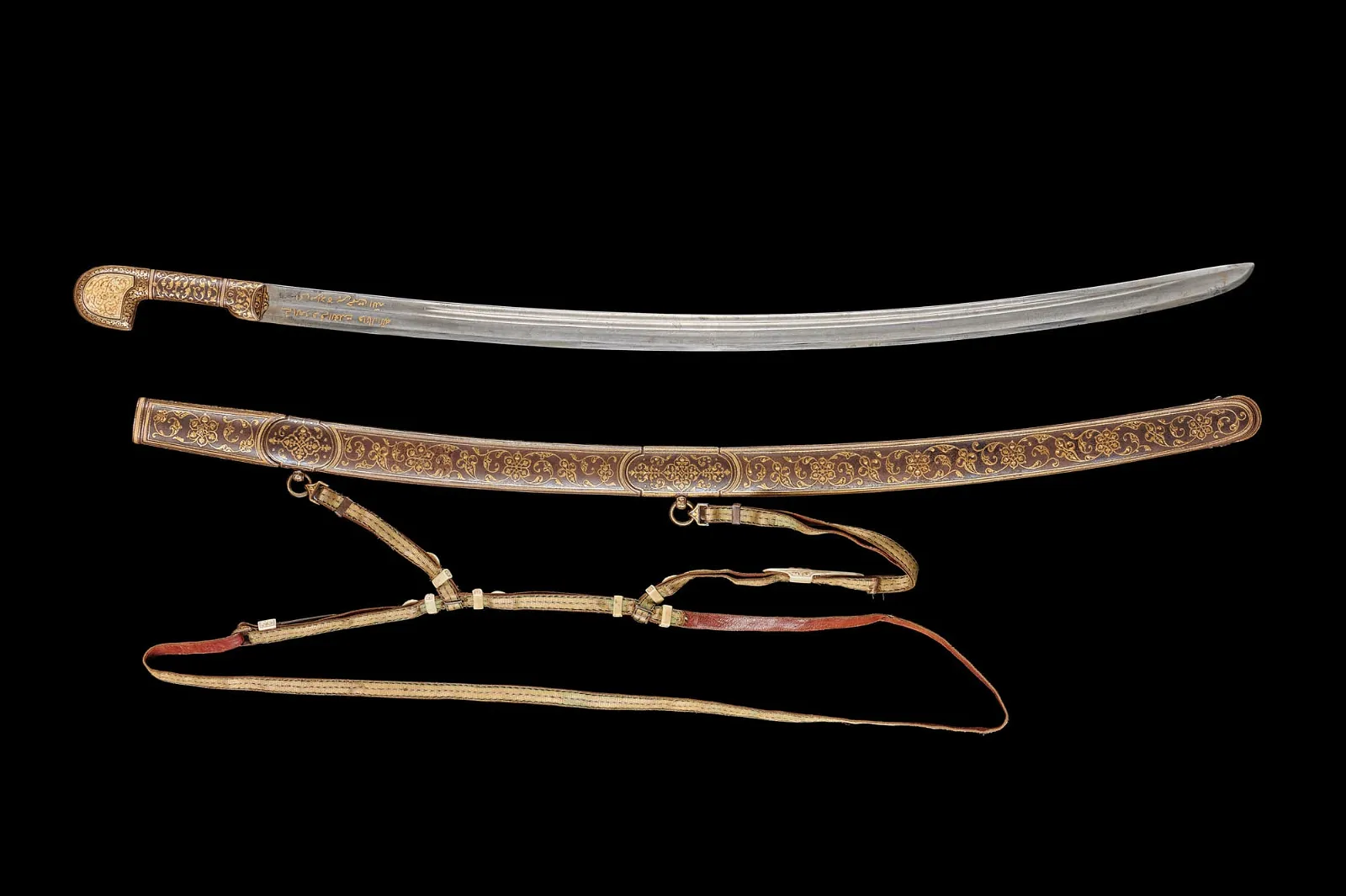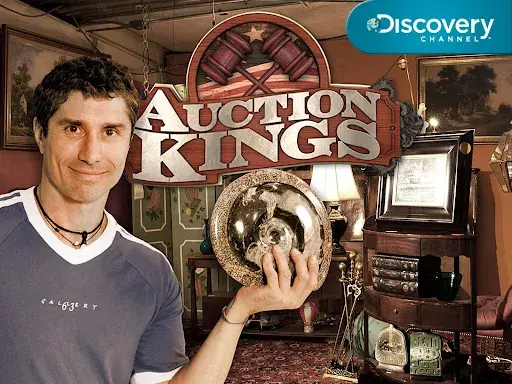Premier treasures of European royalty crown the luxe selection awaiting collectors at Apollo’s July 13-14 Fine Ancient Art, Antiquities & Militaria Auction
Featured: Inscribed and gilded Caucasian shashka of Tsar Nicholas II of Russia, the only royal sword every offered for sale; circa-1509 suit of armor by Pompeo Della Cesa, armorer to Philip II of Spain

LONDON – Central London’s vibrant Fitzrovia neighborhood – an urban village with a bohemian history – is home to many celebrities and art-centric businesses, including Apollo Art Auctions. Antiquities aficionados and militaria buffs flock to Apollo’s sales of ancient art and material culture to view, bid on and hopefully acquire some of history’s most fascinating artifacts. Apollo’s next fully-curated, no-reserve event, an Ancient Art, Antiquities and Militaria Auction, will take place on Saturday and Sunday, July 13-14 and features a wealth of exquisite and well-provenanced works that chronicle the world’s most influential civilizations. In addition to in-house bidding, Apollo welcomes absentee, phone and Internet live bidding through LiveAuctioneers.
“We’re delighted that our next auction includes antiquities from so many well-established collections, such as The Prince Collection,” said Apollo Art Auctions’ director and principal auctioneer, Dr Ivan Bonchev (PhD, University of Oxford). “A very high standard was set for this sale. Each art object and ancient military or cultural relic was scrupulously curated and researched during the cataloging process to ensure they were described with as much background information as possible. We always keep in mind that our catalogs are essentially the next link in the ongoing historical record of every item we handle.”
In addition to The Prince Collection, there are pieces from esteemed members of the Egyptian Exploration Society (EES), which was founded in 1882 by Amelia Edwards and Reginald Stuart Poole; and Jean-Paul Barbier Mueller (1930-2016), a Swiss collector who was known for his extensive museum collection of primitive arts. Also, the auction showcases an extensive glass collection spanning the Greek to Byzantine periods, with such notable provenances as the Constable-Maxwell collection of Roman glass. And last but certainly not least, Apollo Art Auctions is honored to offer selected antiques and antiquities from the Wittelsbach family collection, which represents centuries of Bavarian history and influence.
Two absolutely unique productions lead the ancient and antique armor category. First, there is an extremely fine-quality Caucasian shashka given to Nicholas II, Tsar of Russia, when he was Tsesarevich (heir apparent). Research suggests the saber was presented to Nicholas during a tour of the Caucasus with his father Tsar Alexander III, in 1888. An Arabic inscription in gold on the blade translates to: (M)ay the dominance of the owner of this sword grow, and his life, and his greatness, and may Allah bless his family, and he will achieve his goal. It is also monogrammed with the letters “N” and “A” (for Nicholas Alexandrovich), surrounded by a golden laurel and surmounted by the Imperial Russian crown. Its wonderfully-decorated scabbard bears a calligraphic Arabic inscription that would be the equivalent of a European maker’s mark. Translated, it says “Abdullah worked.” Held in consecutive European private collections, including the Eugene Mollo collection (Switzerland), it is the first royal sword ever to be offered for public sale. It requires an opening bid of £1,200,000 ($1,516,300).
The second armor highlight is a breathtaking circa-1590 AD Italian etched and gilded half-suit of armor created by Pompeo Della Cesa, armorer to Philip II of Spain and many European dukes. The central boss on its breastplate features an image of Infant Christ in the arms of the Virgin Mary, under which appears “POMP,” the celebrated Milanese armorer’s signature. Weighing 14.4kg (31lbs 12oz), this suit would have been made for an infantryman. The illustrious line of provenance most recently includes The Prince Collection and the 2009 Galerie Fischer (Lucerne, Switzerland) auction of the Schulthess family collection. Its prior ownership can be traced back as far as the “Duc de Dino Collection,” which was cataloged by the Baron de Cosson in 1901 and acquired by the Metropolitan Museum of Art in 1904. The opening bid is £500,000 ($631,792).
Traveling back through the millennia, the auction includes spectacular Egyptian antiquities, including an anthropomorphic wooden sarcophagus lid from the Late Period, 26th Dynasty, circa 664-525 BC. Hand-carved from cedar and covered in layers of bitumen, its reverse side is hollow to fit the form of the deceased, and has rosette ornamentation. Its provenance includes a private UK collection, acquisition on the Dutch art market; and the collection of Walter Vanhaerents, who obtained it at a 1986 auction at Nouveau Drouot. A catalog from that sale accompanies the lot, which will open at £10,000 ($12,636)
Egyptian sandstone reliefs proved extremely popular with collectors in Apollo’s April 27-28 auction. This time around, there could be a similar level of interest in an Egyptian limestone relief, New Kingdom, 18th Dynasty, circa 1539-1292 BC, bearing cartouches of Akhenaten and Aten. It is similar to an example in the collection of the Metropolitan Museum of Art. Most recently held in The Prince Collection, it comes to auction with an opening bid of £3,000 ($3,791).
Next in the timeline is a huge Attic red-figure krater depicting satyrs and maenads. It dates to circa 500-400 BC, with a possible attribution to the Onesimos painter, an Athenian artist known for his realistically-rendered, active figures; scenes from mythology, and tableaux drawn from daily life. Sized 480mm by 445mm (18.9in by 17.52in), the vessel comes from successive UK private collections going back to the 1980s. Opening bid: £5,000 ($6,318)
Ancient Roman glass enjoys the attention of a legion of followers at Apollo’s auctions. It’s not likely that many would overlook a circa 100 BC-100 AD cobalt-blue ribbed glass bowl entered in the July sale, owing to its vibrant silvery and rainbow-colored iridescence on both the interior and exterior surfaces. It has a shallow phiale-like form with attractive radiating ribs rising from the base and terminating just below the bowl’s smooth rim. A truly beautiful production, it will open with an £8,000 ($10,109) bid.
Another fine example of Roman decorative art is a Sidonian pyxis – a toilette box for cosmetics, trinkets or jewelry. Its octagonal sides display pronounced moldings that depict altars and various other embellishments. Such containers drew influence from similar Greek productions, which sometimes were used to hold incense or medicines dispensed by physicians. With provenance from The Prince Collection, the pyxis in Apollo’s auction is accompanied by a historical report from Alessandro Neri, an international cultural heritage expert based in Florence, Italy. Opening bid: £8,000 ($10,109)
A substantial Hellenistic gold necklace, circa 300-100 BC, weighs 84g (2.96oz) and is formed of four gold wires braided into a “rope” pattern and twisted in a helical manner. Very finely executed, it has Intricately decorated terminals and retains its original gold clasp. Its provenance includes the private collection of Mr. R. Unger; a London gallery; and acquisition in the 1980s on the UK art market. The necklace comes with an authentication report by ancient jewelry specialist Sami Fortune. Opening bid: £5,000 ($6,328)
A Byzantine solid gold cameo ring, circa 500-800 AD, has a banded oval loop and shoulders adorned with a geometric motif. Its gold bezel secures a square banded agate cameo that depicts the Byzantine symbol of the “CHI-RO” inside a round laurel crown. Formerly the property of a London gallery, it was acquired on the Monaco art market and was part of a French collection in the 1970s. Opening bid: £4,000 ($5,054)
To please the many collectors of ancient Chinese figural pottery, Apollo has rounded up a veritable menagerie of Tang and Han Dynasty animals for its July auction. Among the top choices is a circa 618-907 AD Tang terracotta horse, molded in a naturalistic manner and painted with red pigments. The handsome equine measures 660mm by 620mm (26in by 24.4in) and is depicted with a saddle cloth and seat on its back. The figure has been precisely dated via TL testing performed by Ralf Kotalla and will convey with the testing report as well as a historical report from Alessandro Neri. Opening bid: £2,000 ($2,527)
Apollo Art Auctions’ Saturday/Sunday, July 13-14, 2024 no-reserve sale will be held live at the company’s saleroom located at 63/64 Margaret St., London W1W. The auction will start at 8 a.m. US Eastern Time/1 p.m. GMT. All remote forms of bidding will be available, including absentee or live via the Internet through LiveAuctioneers. The company accepts payments in GBP, USD and EUR; and ships worldwide. All packing is handled by white-glove specialists in-house. Questions: Please call +44 7424 994167 or email [email protected]. Visit Apollo Art Auctions online at www.apolloauctions.com
Looking for more press releases? Visit Auction Daily for the latest updates.









